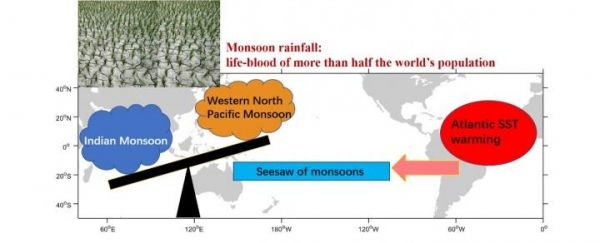The Indian summer monsoon (ISM) and western North Pacific summer monsoon (WNPSM) are two major subcomponents of the Asian summer monsoon. The monsoon rainfall is the life-blood of more than half the world’s population. A better understanding of the ISM and WNPSM variability is of vital importance both in a socio-economic and scientific sense.
In a recent study published in Atmospheric and Oceanic Science Letters, the authors, from Guangdong Ocean University, quantitatively examined and compared the intensity of the interannual variability (IIV) of the monsoon and monsoon–ENSO biennial relationship (MEBR) for both the ISM and WNPSM.
“Our results reveal interesting multidecadal seesaw patterns of the ISM and WNPSM in terms of their IIV and MEBR, which could be triggered by the increasing influences from the tropical Atlantic Ocean,” says Dr. WANG Lei, the corresponding author of this study.
Read more at Institute of Atmospheric Physics, Chinese Academy of Sciences
Image: The increasing influences from the tropical Atlantic sea surface temperature could trigger the observed multidecadal seesaw of Indo-Pacific summer monsoons in terms of their intensity of interannual variability and monsoon-ENSO biennial relationship variability. (Credit: Dr. Lei WANG)


